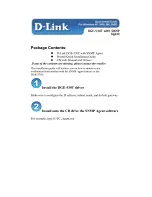
S e n d d o c u m e n t a t i o n c o m m e n t s t o m d s f e e d b a c k - d o c @ c i s c o . c o m
28-6
Cisco MDS 9000 Family CLI Configuration Guide
OL-16184-01, Cisco MDS SAN-OS Release 3.x
Chapter 28 Configuring FICON
About FICON
zoning, read-only zones, and VSAN-based access control. See
Chapter 32, “Configuring RADIUS
and ”
Chapter 36, “Configuring FC-SP and DHCHAP,”
and
Chapter 38, “Configuring
Fabric Binding.”
•
Traffic encryption—IPSec is supported over FCIP. You can encrypt FICON and Fibre Channel
traffic that is carried over FCIP. See
Chapter 35, “Configuring IPsec Network Security.”
•
Local accounting log—View the local accounting log to locate FICON events. See the
“MSCHAP
Authentication” section on page 32-34
and
“Local AAA Services” section on page 32-35
.
•
Unified storage management—Cisco MDS 9000 FICON-enabled switches are fully IBM CUP
standard compliant for in-band management using the IBM S/A OS/390 I/O operations console. See
the
“CUP In-Band Management” section on page 28-40
.
•
Port address-based configurations—Configure port name, blocked or unblocked state, and the
prohibit connectivity attributes can be configured on the ports. See the
“Configuring FICON Ports”
section on page 28-23
.
•
You can display the following information:
–
Individual Fibre Channel ports, such as the port name, port number, Fibre Channel address,
operational state, type of port, and login data.
–
Nodes attached to ports.
–
Port performance and statistics.
•
Configuration files—Store and apply configuration files. See the
“FICON Configuration Files”
section on page 28-32
.
•
FICON and Open Systems Management Server features if installed. —See the
“VSANs for FICON
and FCP Mixing” section on page 28-5
.
•
Enhanced cascading support—See the
“CUP In-Band Management” section on page 28-40
.
•
Date and time—Set the date and time on the switch. See the
“Allowing the Host to Control the
Timestamp” section on page 28-20
.
•
Configure SNMP trap recipients and community names—See the
“Configuring SNMP Control of
FICON Parameters” section on page 28-21
.
•
Call Home configurations—Configure the director name, location, description, and contact person.
See
Chapter 54, “Configuring Call Home.”
•
Configure preferred domain ID, FC ID persistence, and principal switch priority—See
Chapter 17,
“Configuring Domain Parameters.”
•
Sophisticated SPAN diagnostics—The Cisco MDS 9000 Family provides industry-first intelligent
diagnostics, protocol decoding, and network analysis tools as well as integrated Call Home
capability for added reliability, faster problem resolution, and reduced service costs. See
Chapter 52,
“Monitoring Network Traffic Using SPAN.”
•
Configure R_A_TOV, E_D_TOV—— See the
“Fibre Channel Time Out Values” section on
page 29-4
.
•
Director-level maintenance tasks—Perform maintenance tasks for the director including
maintaining firmware levels, accessing the director logs, and collecting data to support failure
analysis. See
Chapter 59, “Monitoring System Processes and Logs.”
•
Port-level incident alerts—Display and clear port-level incident alerts. See the
“Clearing RLIR
Information” section on page 28-32
.
















































